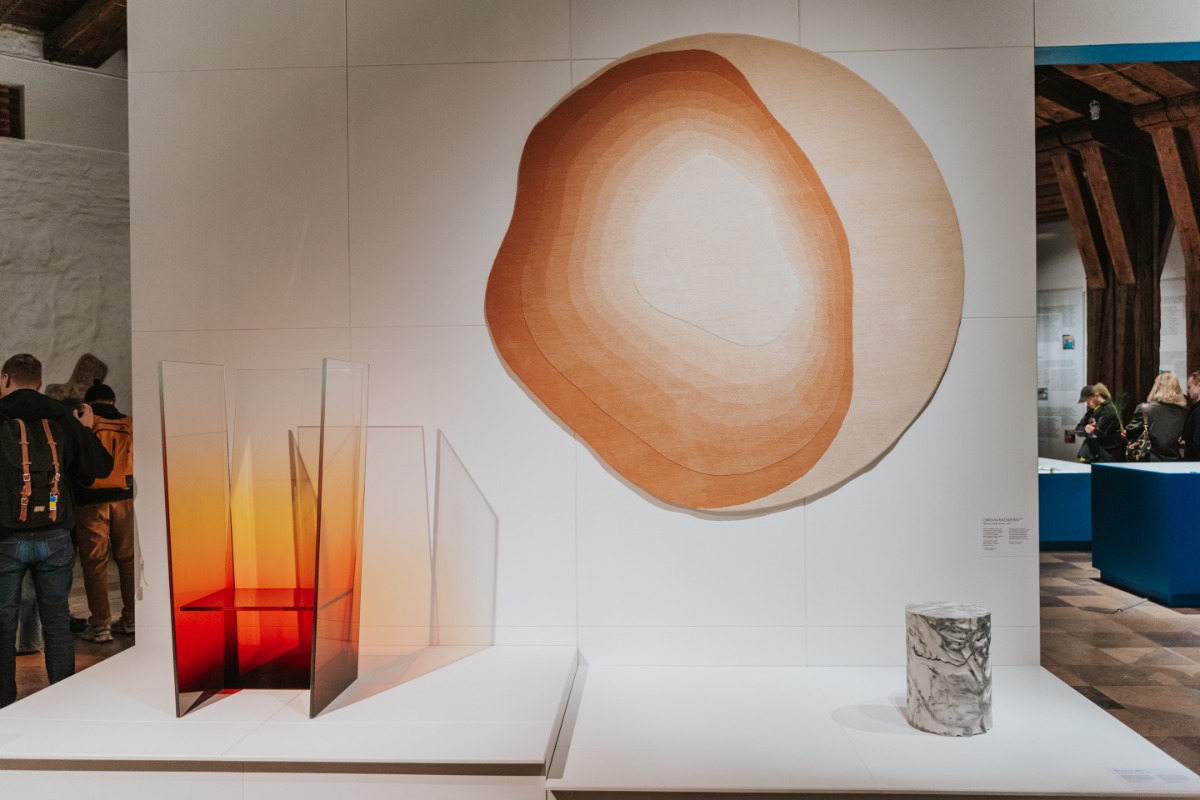
Germans Ermičs: Gradual at the Museum of Decorative Arts and Design in Riga
The Museum of Decorative Arts and Design in Riga is hosting the solo exhibition Gradual, featuring the internationally renowned Latvian designer Germans Ermičs, through May 28.
Gradually flowing through a continuous narrative, the exhibition reveals not only the designer’s creative life but also the process of design creation – from the first impulse of inspiration to the first sketch, then to further visualisations and up until the final materialisation of the idea. Part of the exhibition’s architecture has been set up as a stylised interior of a house or an imaginary design studio – an internal “behind-the-scenes” process that the viewer goes through before reaching the other side of the creation process, i.e. the presentation of the most important works. “I thought it would be a bit arrogant to just bring the works and have them beautifully displayed,” says the designer, justifying the concept of an exhibition based on an educational and explanatory format in which the viewer is introduced to his design approach, techniques, and creative process.
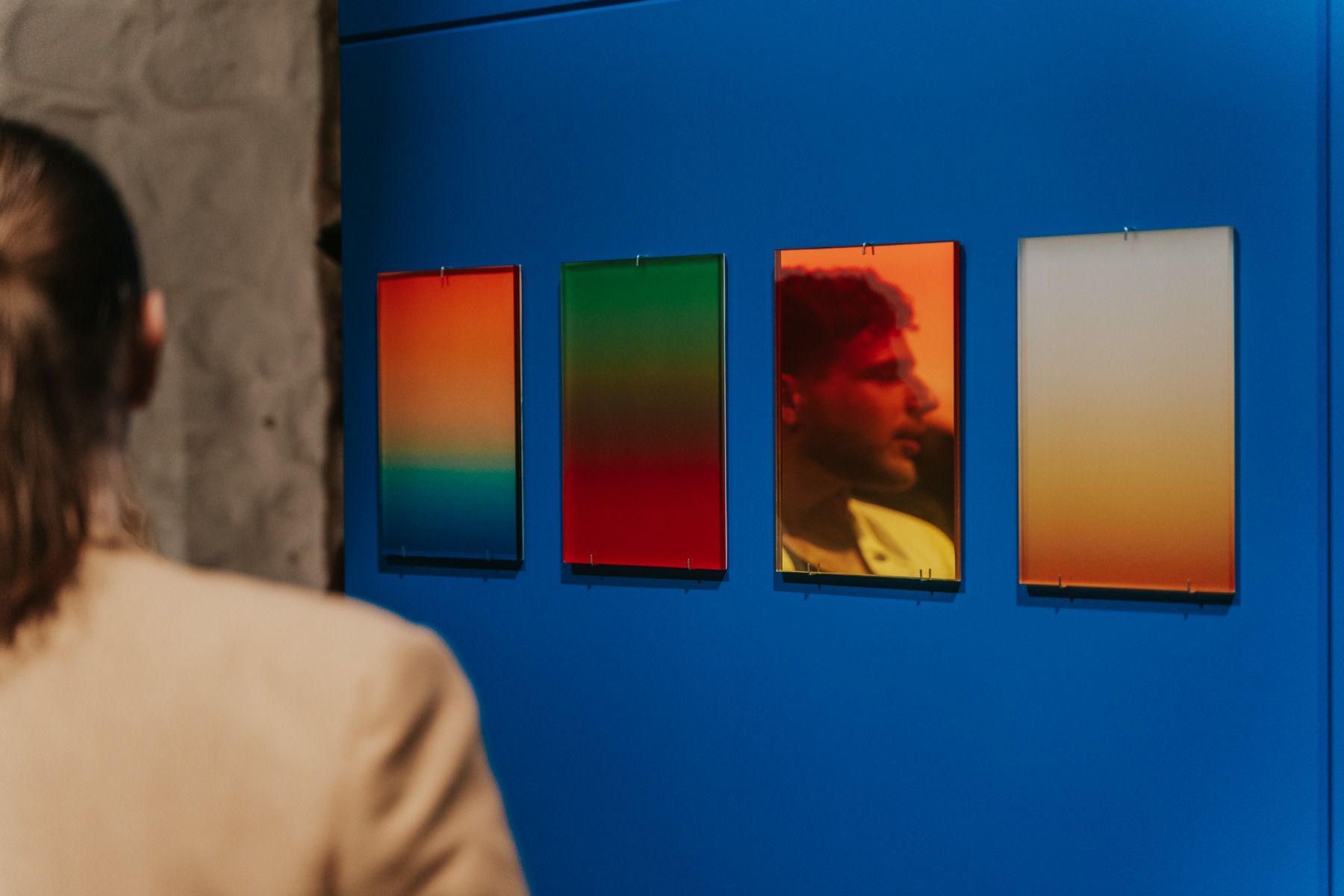
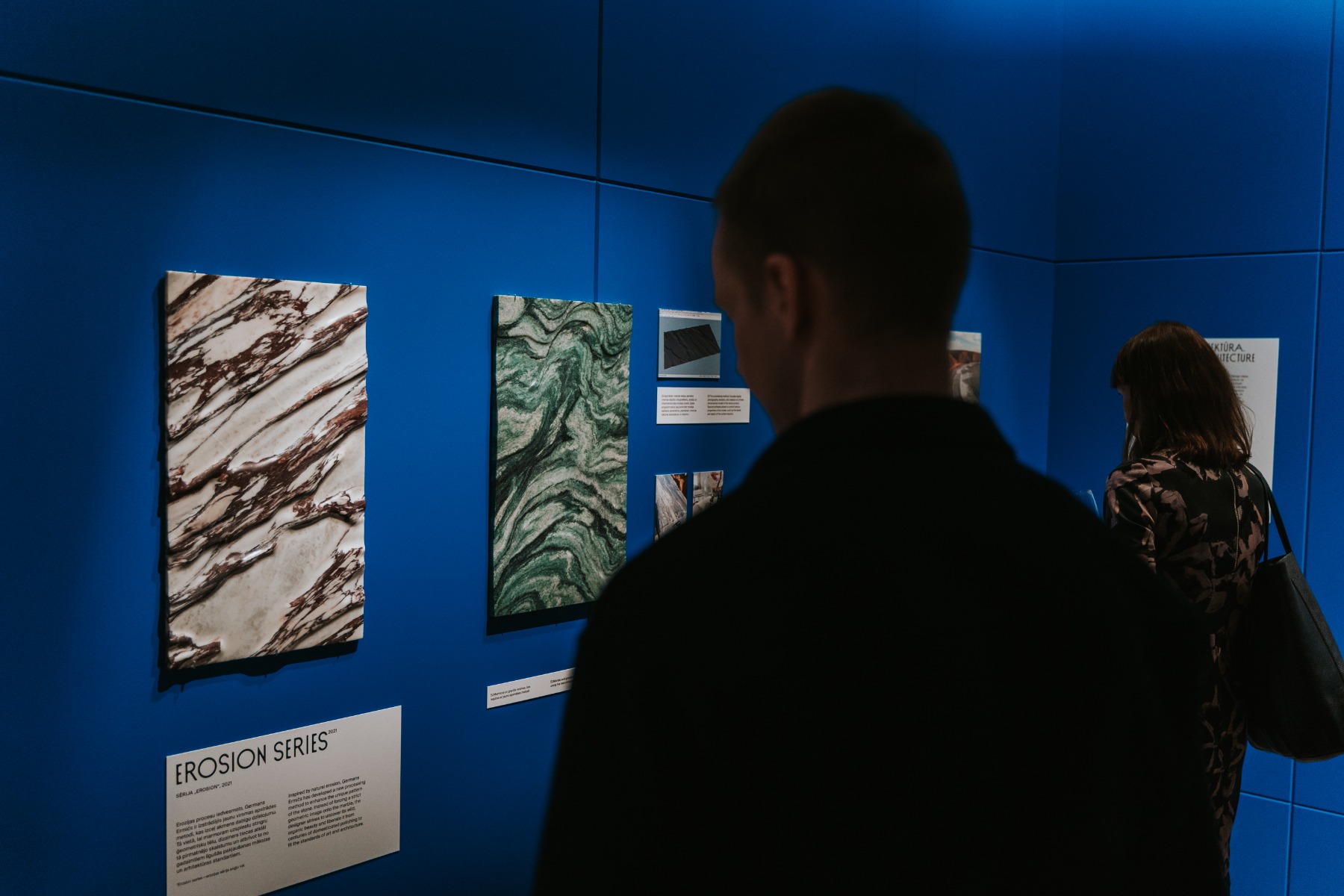
In exploring this process, the viewer is given a close-up view of examples of natural stone, textile and glass materials that almost present as works of art or design in their own right. In a past interview with Arterritory, Ermičs stated: “I want people to look at the glass – not through it.” The sample wall is a moment in the exhibition when the viewer can look at the material from the philosophical point of view of the designer, one in which pattern or colour is not just decoration or a coating. Even something as elusive as a colour or the veining in marble can be seen as a material, a fluid substance that can be transformed into objects and experiences.

Photo: Lauris Aizupietis
The Gradual exhibition brings together Ermičs’ most significant work since the founding of his studio in 2014. His work mainly materialises seemingly immaterial phenomena. In the space between design and art, projects are realised in which, as the designer himself says: “Ideas from the two-dimensional world are transferred into three-dimensional space and objects”. Among them, the exhibition presents the designer’s attempt to give sound a tangible sensation – The Circle of Fifths (2019), a tactile sound sculpture created in collaboration with the Danish electronics company Bang&Olufsen. Ermič’s exploration of the interplay between colour and texture can be seen in one of the five Nepalese woven rugs in the Tidal Collection series, a collaboration with Italian brand cc-tapis.
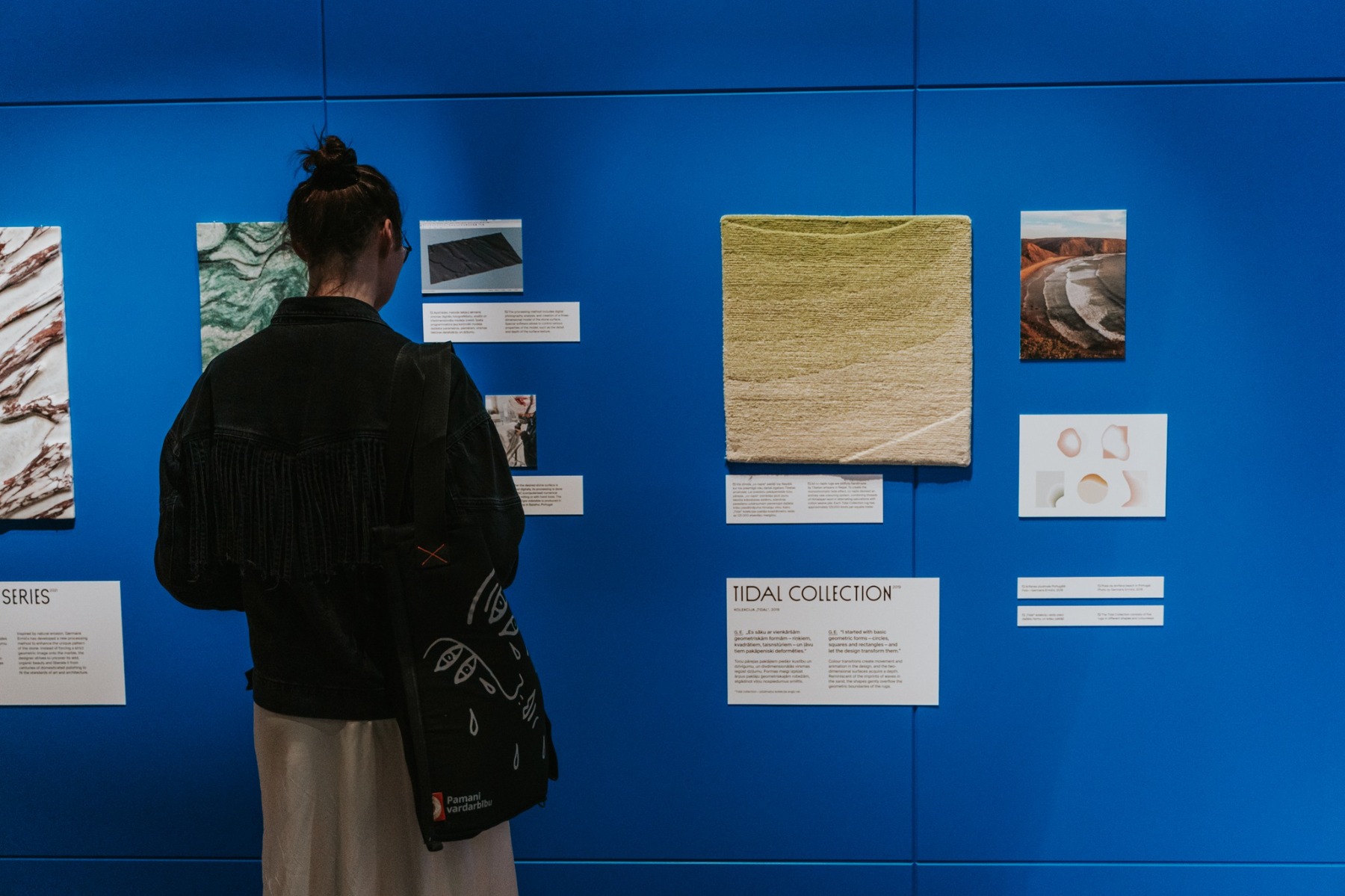
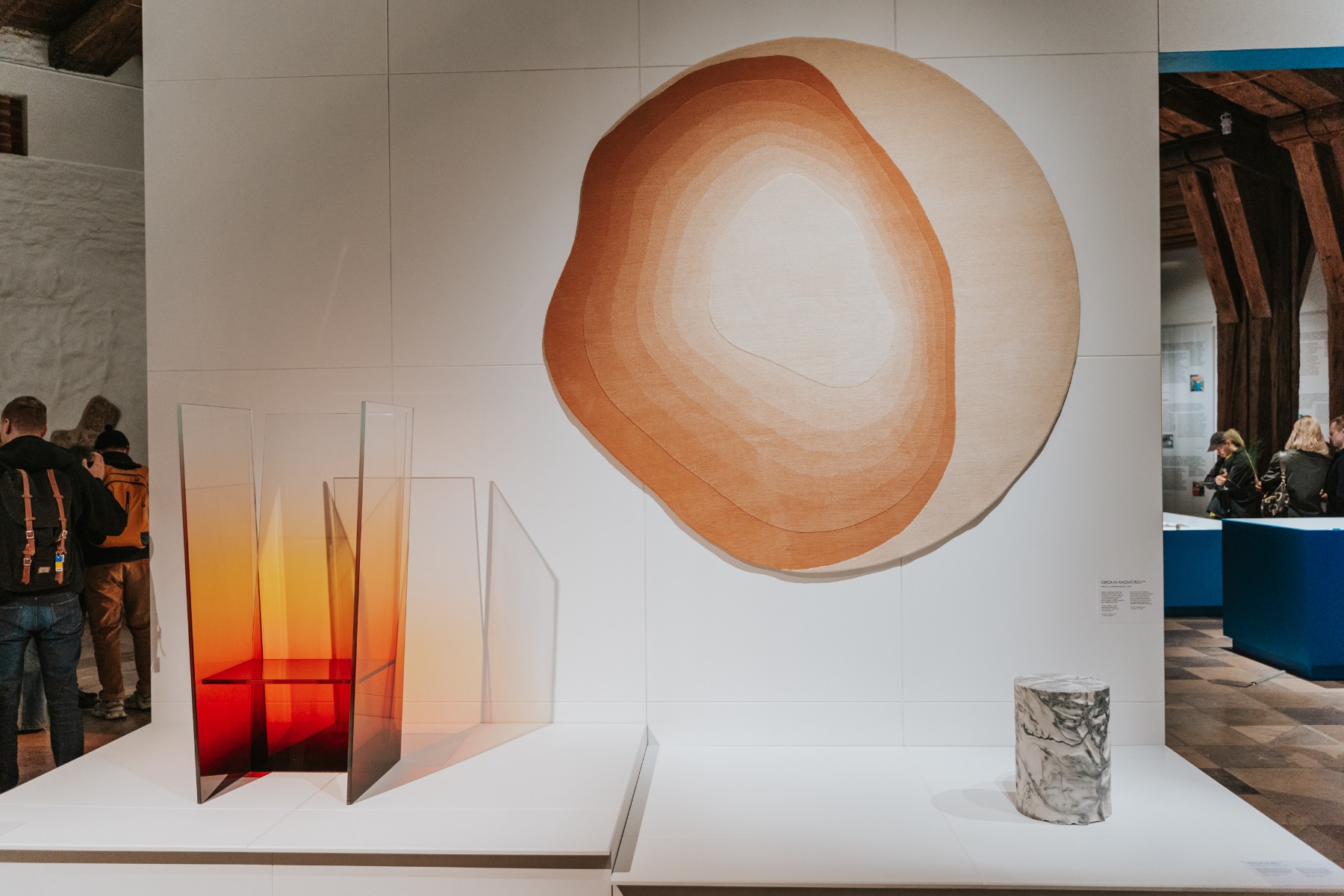
The exhibition also includes a significant period in the designer’s journey of material exploration – marble and its natural erosion process. From this point in time we can see the side table Pele de Tigre (2021) in which, in contrast to traditionally “immersing” a work into a polished material, the designer has "pulled" the unique striations of marble to the surface of the stone, making each vein a literally tangible, visually expressive surface texture.
Photo: Lauris Aizupietis
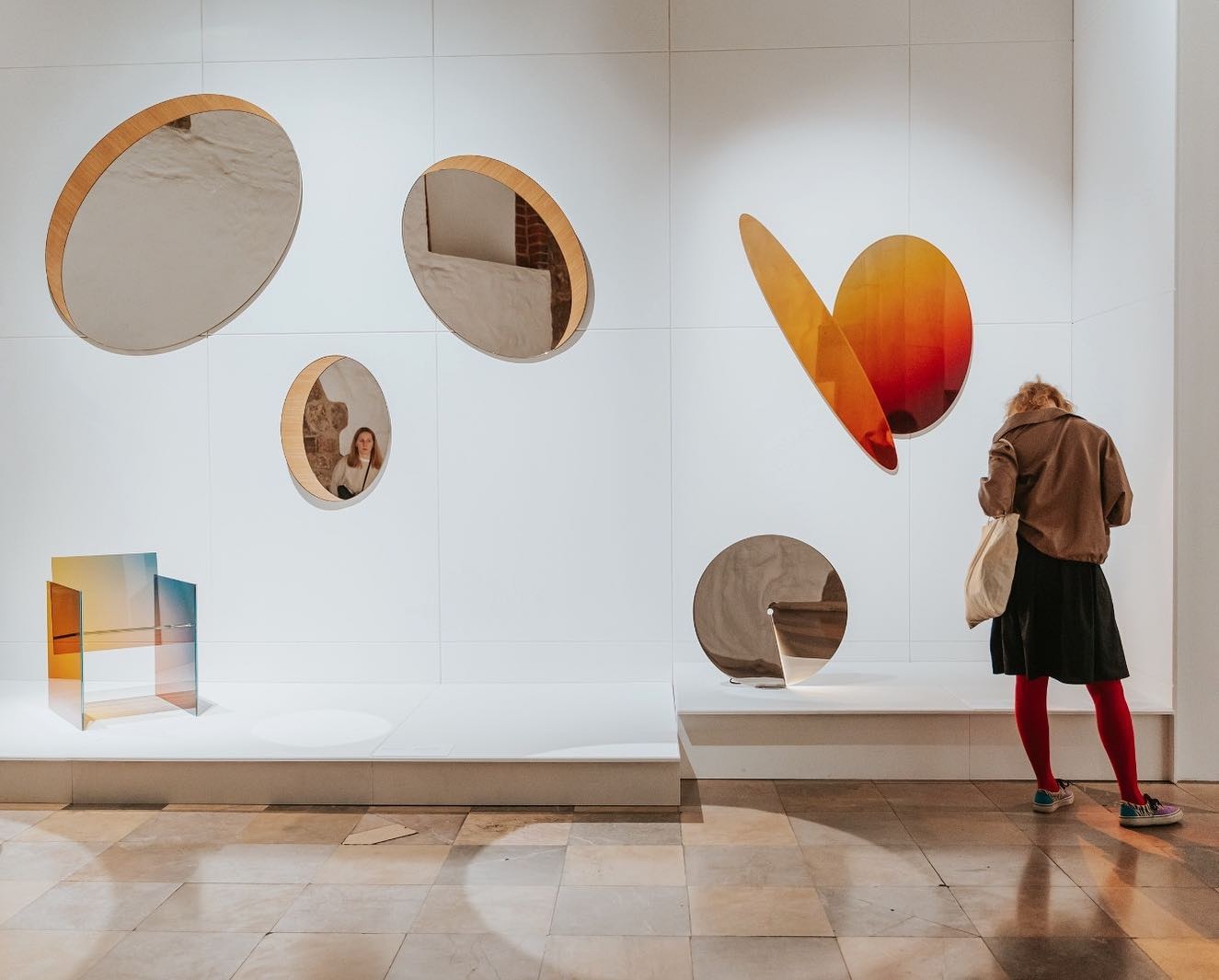
The exhibition also presents Ermičs’ 2011 diploma work, Isometric Mirrors, which plays with optical illusions and searches for possibilities of expanding space. His latest mirror collection, Off Course (2022) is also on show. Also in the museum’s exhibition hall, specifically, in what was once the apse of the former church, is Ermičs’ 2021 Design Miami/Basel installation comprised of four design objects from the Shaping Colour series.
Photo: Lauris Aizupietis
And, of course, the exhibition’s royal cortege – Ermičs’ throne-shaped Sunburst Tall Glass Chair (2021), as well as the Ombré Glass Chair (2017), which has confidently established itself among design experts, enthusiasts and the media, and dramatically marked the momentum and trajectory of the designer’s career.
Photo: Lauris Aizupietis
The design objects on view in the exhibition have travelled to the Riga museum from Italy, Denmark, the Netherlands, France, Portugal, Nepal and even from right here, in Latvia.
Photo: Lauris Aizupietis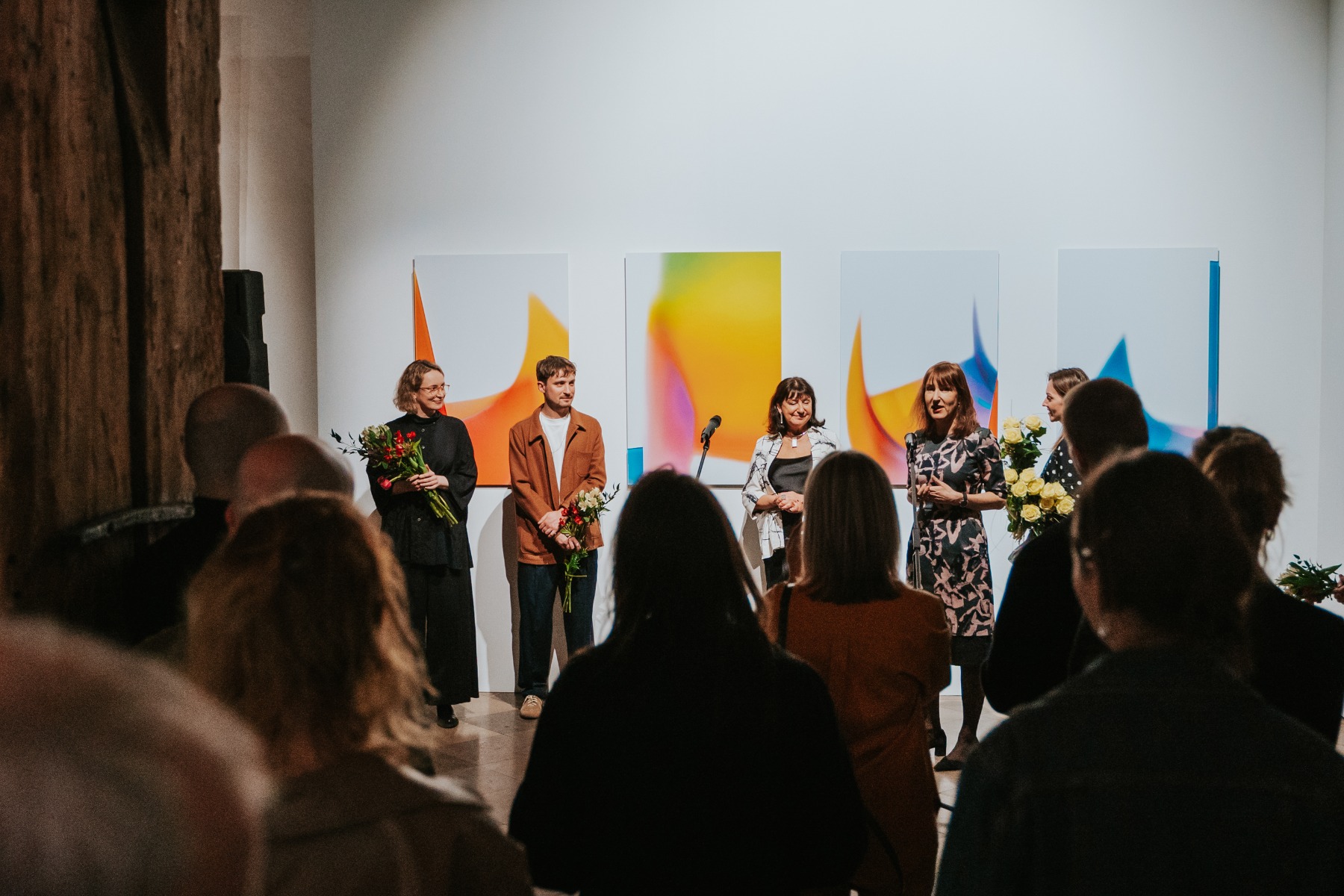
Photographer Filips Šmits, who has long interpreted Ermičs’ work through photography, has contributed to the exhibition, as has musician Artūrs Liepiņš: for the exhibition Gradual, Liepiņš adapted a piece of music that was specifically composed to complement Ermičs’ 2019 project Where The Rainbow Ends at the Cannes Lions International Festival in France – a glass pavilion that was a technically and engineer-wise challenging project enhanced with a sound and light experience.
Germans Ermičs and curator Evelīna Ozola. Photo: Lauris Aizupietis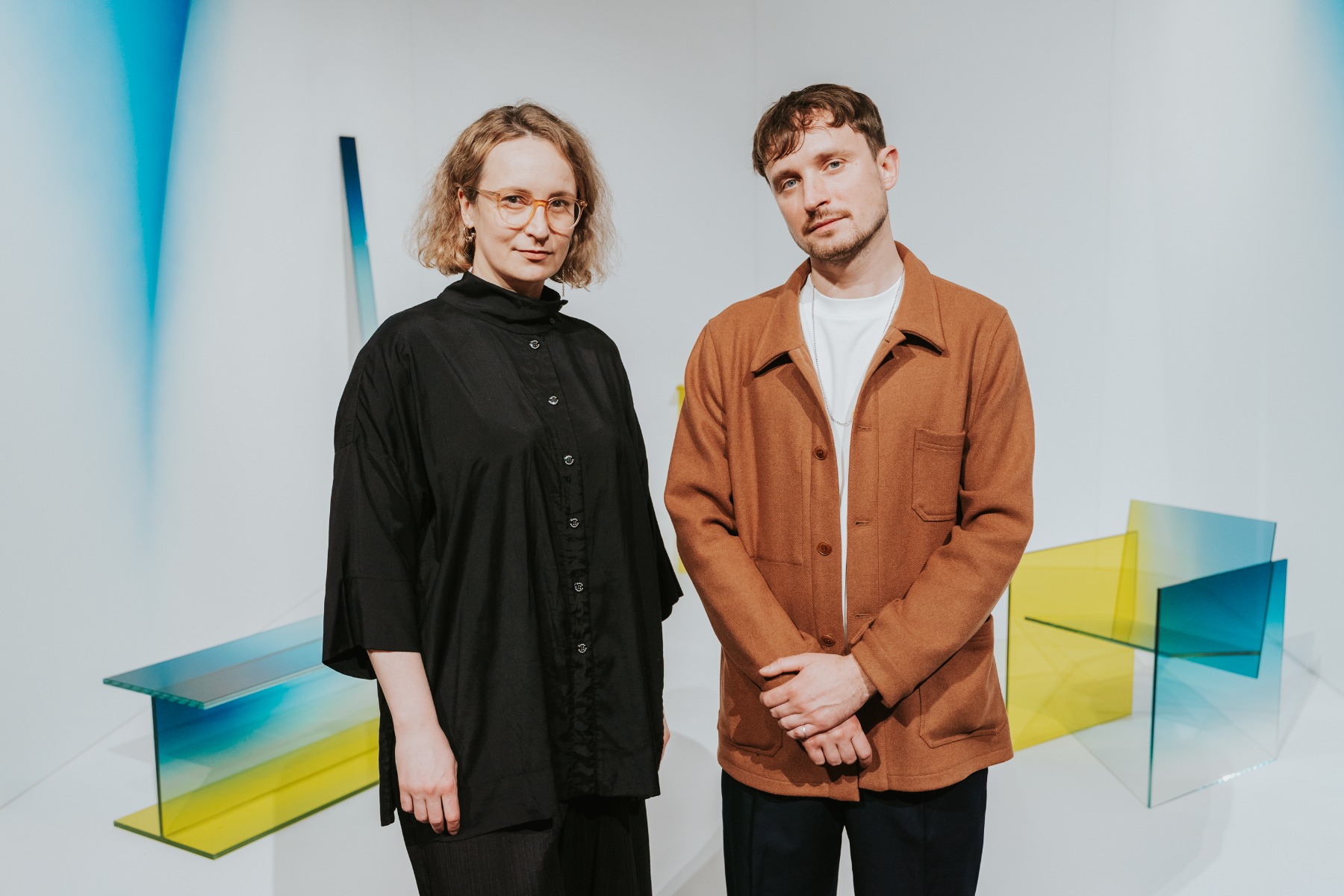
The exhibition has been curated by the architect, urbanist and publicist Evelīna Ozola. The graphic design of the exhibition is by Aleksejs Murraško.

How does it feel to see an almost complete overview of your work – several major works in one place? Has this exhibition made you draw any internal conclusions about what you have done so far, and how you will move forward?
Yes, seeing my work in one place is really a unique experience for me as well. This exhibition has given me the opportunity to do some introspection, understanding where I started and where I am now. It has allowed me to look back at the thoughts I have had and where they have led me. This is also logically in line with the concept of the exhibition and its title. But yes, it’s a bit funny – yet very cool – feeling.


How would the format of the exhibition be different if it were held somewhere other than Latvia?
In any case, it really feels more special to show my work here in Riga. I don’t think the content would be any different if it were somewhere else. I really wanted to share my working process and sources of inspiration. And maybe inspire others.
How do you see your next exhibition in, say, ten years?
That’s a good question for me to ask myself – where am I really going? I definitely want to evolve and change. In my work, that could be new materials, new mediums, and new means of expression. Perhaps my latest work is already beginning to chart that path and direction. Really, I just hope that the next exhibition like this one (maybe not on such a large scale) will not be ten years from now, but much sooner!